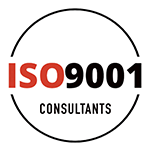Maintaining high-quality standards is crucial for any business. ISO 9001 is a global standard that helps organisations ensure that their products and services meet consistent quality standards. By implementing ISO 9001, businesses can improve their operations and satisfy their customers.
Achieving and maintaining ISO 9001 certification involves understanding its principles, applying its key elements, and taking steps for continuous improvement. So, let’s explore how ISO 9001 helps maintain quality standards, providing a practical guide for businesses looking to enhance their operations.
Understanding ISO 9001 Quality Management Principles
ISO 9001 is built on several key quality management principles that guide businesses in achieving consistent, high-quality results. These principles help create a strong foundation for quality management systems, ensuring processes are efficient and effective.
1. Customer Focus:
The primary objective of ISO 9001 is to meet customer needs and exceed their expectations. A customer-focused approach ensures that all processes are aligned towards delivering products and services that satisfy customers, leading to increased loyalty and repeat business.
2. Leadership:
Strong leadership is crucial for implementing and maintaining a quality management system. Effective leaders provide direction, create a positive work environment, and engage employees in achieving quality objectives. Leadership commitment ensures that quality remains a top priority within the organisation.
3. Engagement of People:
Involving employees at all levels is essential for a successful quality management system. When employees are engaged and valued, they are more motivated and contribute to continuous improvement. Training and empowering staff to take ownership of their roles fosters a culture of quality.
4. Process Approach:
ISO 9001 emphasises understanding and managing interrelated processes as a system. A process approach ensures that all activities are coordinated and optimised for efficiency. This reduces waste and leads to consistent outputs that meet quality standards.
5. Improvement:
Continuous improvement is a core principle of ISO 9001. Regularly reviewing and improving processes ensures that the business remains competitive and adaptable to changes. This proactive approach helps identify areas for enhancement and implement effective solutions.
6. Evidence-based Decision Making:
Making decisions based on data and analysis is critical for maintaining quality standards. ISO 9001 encourages using accurate information to make informed decisions, ensuring actions taken are effective and beneficial to the organisation.
7. Relationship Management:
Building strong relationships with stakeholders, including suppliers and customers, is vital for sustained success. Good relationship management ensures mutual benefits and contributes to the overall quality of products and services.
These principles are the backbone of ISO 9001 and help businesses create a structured approach to quality management. Understanding and applying these principles ensures a robust quality management system that delivers consistent results.
Key Elements of ISO 9001 for Ensuring Quality
ISO 9001 has several key elements that help ensure quality in business processes. These elements provide practical steps for implementing and maintaining a quality management system that meets the standard’s requirements.
1. Quality Policy:
The quality policy is a document that outlines the organisation’s commitment to quality. It sets the direction for quality objectives and provides a framework for continuous improvement. A clear and well-communicated quality policy ensures everyone understands the importance of quality.
2. Quality Objectives:
Setting measurable quality objectives helps track progress and improvements. These objectives should be aligned with the organisation’s quality policy and focus on areas such as customer satisfaction, process efficiency, and product quality. Regularly reviewing and updating these objectives ensures they remain relevant and achievable.
3. Risk Management:
Identifying and managing risks is crucial for maintaining quality. ISO 9001 requires businesses to assess potential risks and take steps to mitigate them. This proactive approach helps prevent issues before they arise, ensuring consistent quality in processes and outputs.
4. Documented Information:
Proper documentation is essential for an effective quality management system. This includes maintaining records of processes, procedures, and activities. Accurate documentation ensures consistency and provides evidence of compliance with ISO 9001 standards.
5. Internal Audits:
Conducting regular internal audits helps identify areas of non-compliance and opportunities for improvement. Internal audits are a way to verify that processes are followed correctly and that the quality management system is effective. Addressing findings from these audits ensures continuous improvement.
6. Management Review:
Regular management reviews assess the performance of the quality management system. These reviews involve analysing data, evaluating progress towards quality objectives, and making decisions for improvement. Management reviews ensure that the system remains effective and aligned with organisational goals.
7. Corrective Actions:
Implementing corrective actions to address non-conformities is key to maintaining quality. When issues are identified, taking steps to correct them and prevent recurrence ensures that they do not impact the overall quality of products and services. Documenting these actions provides a record of continual improvement.
By focusing on these key elements, businesses can ensure that their quality management system is comprehensive and effective. ISO 9001 provides a structured approach to quality, helping organisations maintain high standards and achieve consistent results.
Benefits of ISO 9001 in Daily Operations
ISO 9001 brings numerous benefits to daily operations, helping businesses run more efficiently and effectively. These benefits contribute to higher quality products and services and increase overall customer satisfaction.
1. Process Efficiency:
ISO 9001 helps streamline processes by identifying and eliminating inefficiencies. A process approach ensures that all activities are coordinated, reducing waste and improving productivity. This leads to smoother operations and cost savings.
2. Improved Product Quality:
By following ISO 9001 standards, businesses can ensure that their products consistently meet customer requirements. This reduces defects and recalls, leading to higher customer trust and satisfaction.
3. Employee Involvement:
Engaging employees in the quality management system motivates them to take ownership of their work. Training and involvement in continuous improvement efforts make employees feel valued, leading to higher job satisfaction and morale.
4. Risk Management:
ISO 9001 emphasises proactive risk management, helping businesses identify potential issues before they become problems. This reduces the likelihood of disruptions and ensures more reliable operations.
5. Customer Satisfaction:
Meeting and exceeding customer expectations is a key goal of ISO 9001. By consistently delivering quality products and services, businesses can build strong customer relationships and foster loyalty.
6. Continuous Improvement:
The focus on continuous improvement helps businesses stay competitive. Regularly reviewing and enhancing processes ensures that the organisation adapts to changes and remains efficient.
These benefits highlight why implementing ISO 9001 is valuable for businesses. Improved efficiency, higher product quality, and increased customer satisfaction are just a few of the positive impacts on daily operations.
Steps to Continuous Improvement with ISO 9001
ISO 9001 fosters a culture of continuous improvement, encouraging businesses to regularly assess and enhance their processes. Following these steps can help ensure ongoing progress and maintain high-quality standards.
1. Set Clear Objectives:
Start by setting clear, measurable objectives for improvement. These should align with the organisation’s quality policy and focus on areas that need enhancement. Clear goals provide direction and make it easier to track progress.
2. Collect and Analyse Data:
Collecting and analysing data is crucial for identifying areas for improvement. Use key performance indicators (KPIs) to measure process efficiency, product quality, and customer satisfaction. Data-driven decisions are more effective and reliable.
3. Conduct Regular Reviews:
Regularly review processes and performance against the set objectives. Management reviews and internal audits help identify gaps and opportunities for improvement. These reviews ensure that the quality management system remains effective.
4. Implement Changes:
Based on the review findings, implement changes to improve processes. This could involve updating procedures, providing additional training, or adopting new technologies. Documenting these changes ensures consistency and provides a record of improvements.
5. Monitor Results:
After implementing changes, monitor the results to assess their effectiveness. Use feedback from employees and customers to evaluate the impact of the improvements. Continuous monitoring helps ensure that the changes lead to the desired outcomes.
6. Encourage Employee Involvement:
Involve employees in the improvement process. Encouraging their input and feedback fosters a sense of ownership and helps generate innovative ideas for enhancing processes. Employee involvement is key to sustaining continuous improvement.
By following these steps, businesses can maintain a cycle of continuous improvement. ISO 9001 provides a structured approach to identifying and implementing changes, ensuring that quality standards are consistently met and enhanced.
Maintaining Top Quality with ISO 9001 Standards
Maintaining quality standards is essential for any business aiming for long-term success. ISO 9001 offers a comprehensive framework for creating and sustaining a quality management system. By understanding its core principles and key elements, businesses can ensure that their processes remain efficient and effective.
For businesses looking to implement or improve their quality management systems, ISO 9001 provides clear guidelines and practical steps. By committing to quality and continuous improvement, organisations can achieve and maintain high standards, ensuring success and customer loyalty.
If you want to enhance your business processes and achieve ISO 9001 certification in Sydney, contact ISO 9001 Consultants today. Our team can help you navigate the requirements and achieve lasting success through quality management!








Users Comments
Get a
Quote